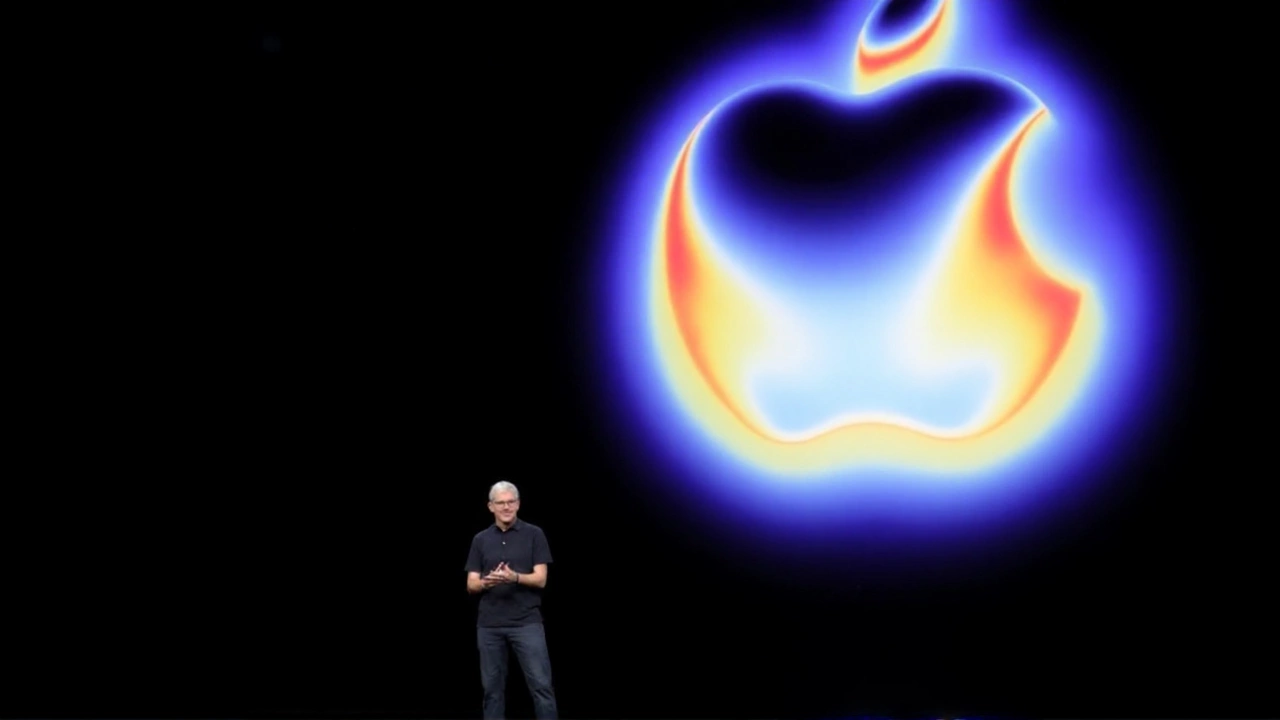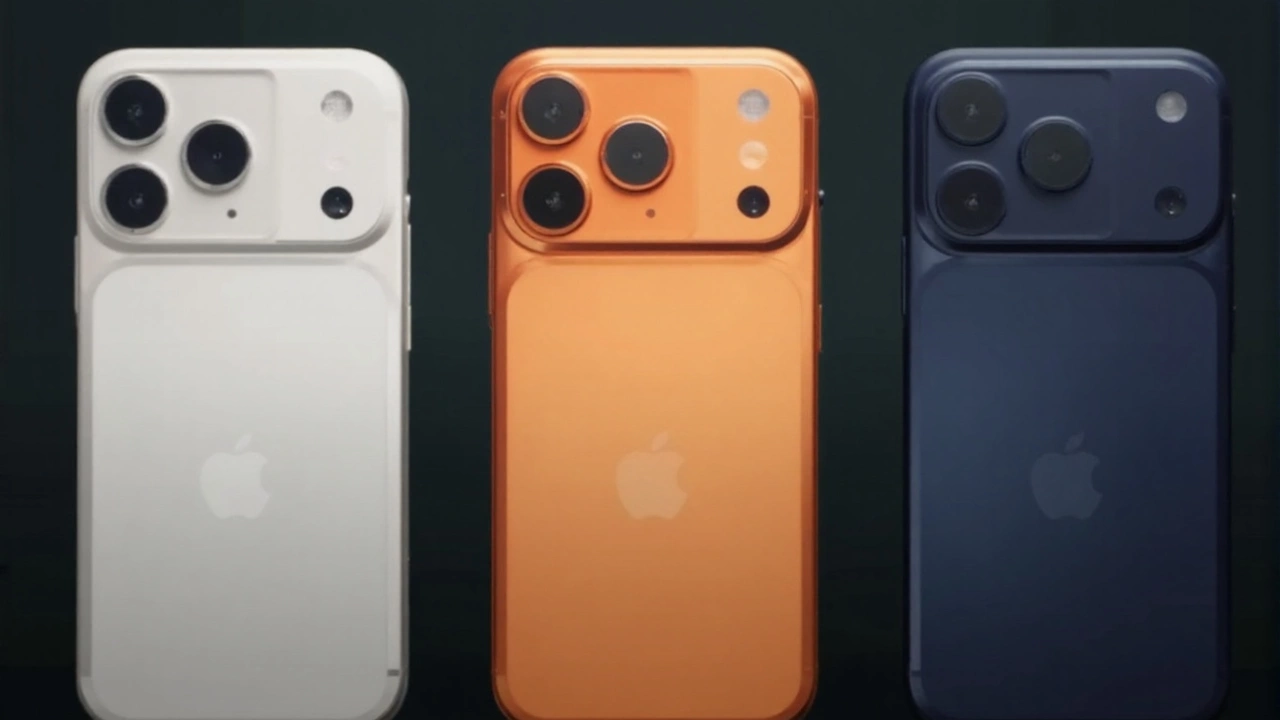Apple’s fall showcase was all about endurance and utility. A bigger battery in the iPhone 17 Pro lineup, satellite tools in Apple Watch Ultra 3, and live translation in AirPods Pro 3 tell a clear story: longer-lasting devices that keep you connected, informed, and safer.
The company touched three core product lines with meaningful upgrades. Phones get a redesigned thermal system and more room for power. The top Apple Watch gains a larger, brighter panel with smarter always‑on behavior and emergency satellite services. AirPods pull in health and language features without changing their familiar look.
iPhone 17 Pro: bigger battery, cooler under load, same premium pitch
The headline change is a reworked internal design that creates space for the largest battery ever in a Pro iPhone. Apple highlighted a new camera “plateau” and enhanced thermal management that together help with heat dissipation and sustained performance. In plain terms: the phone runs cooler and lasts longer, especially during demanding tasks like gaming, 4K video capture, and on‑device AI features.
The iPhone 17 Pro Max sets a new longevity mark for the lineup, with Apple claiming up to 39 hours of video playback. That’s not a stand‑in for total battery life, but it’s a useful benchmark for consistency across releases. The standard iPhone 17 Pro inherits the same design approach, just in a smaller package.
Pricing starts at $1,099 for 256GB. Pre‑orders open Friday, September 12, with general availability beginning September 19. If you’re coming from a 14 Pro or older, the battery and thermals alone will feel like a real upgrade. Heavy camera users should also care about the plateau design; a stiffer, flatter camera shelf typically improves stability for lenses and image sensors during long shoots.
Why fuss over thermals? Heat is the quiet battery killer and a performance cap. A more efficient thermal path keeps the chip from throttling as quickly when you push it—think sustained frame rates in graphically intense games or long FaceTime calls on cellular. It also protects battery health over time. Apple didn’t go into materials or chamber geometry, but the emphasis suggests this was a priority in the engineering brief.
That bigger battery also hints at Apple’s broader software direction. The company has been pushing more on‑device intelligence and background processing for photos, voice, and notifications. Those features are most useful when they don’t drain your phone before dinner. The 17 Pro series looks built to handle that load.
On materials and finish, Apple stuck with premium construction and tight tolerances. The plateaued camera housing won’t please everyone aesthetically, but there’s a practical payoff: more internal volume for the cell without bulking the entire chassis. That trade‑off mirrors what we’ve seen in pro‑grade cameras and rugged phones—function carefully winning over form.
Apple kept color and storage options quiet on stage, focusing mostly on what changes your day. That restraint fits the message. This is a performance and battery cycle release, not a cosmetic one.

Apple Watch Ultra 3 and AirPods Pro 3: satellite safety, bigger screens, health features go mainstream
The Apple Watch Ultra 3 doubles down on visibility and safety. It keeps the 49mm titanium case but expands the screen using Apple’s most advanced LTPO3 with wide‑angle OLED. Borders are 24% thinner, which increases the active area without upsizing the watch itself. The panel measures 422 by 514 pixels over 1,245 square millimeters, and it’s brighter with improved viewing at angles—useful when the watch is on a handlebar or clipped over a wetsuit.
Battery life rises to a claimed 42 hours of standard use, extending to 72 hours in Low Power Mode. For anyone doing multi‑day hikes, races, or fieldwork, that’s meaningful. The natural titanium model weighs 61.6 grams; black titanium comes in at 61.8 grams. The differences are tiny, which tells you Apple spent its weight budget on the display and radios.
Satellite capability is the standout. Ultra 3 adds Emergency SOS via satellite with two years included. With an active cellular plan, it can also pass limited data for Messages and Find My through satellites when you’re off the grid. This is still an emergency‑first feature—bandwidth and latency aren’t built for casual chat—but it’s significant when trails, deserts, and oceans are part of your routine.
The watch also supports 5G, which will help pull down maps and sync content faster when you’re back in coverage. On the health side, Ultra 3 introduces hypertension detection and deeper sleep scoring. Cuff‑less blood pressure features tend to roll out region by region, so expect availability to depend on local clearances. Apple framed these tools as early indicators, not medical diagnoses, which aligns with how wearables responsibly handle risk signals today.
New faces include Flow and Exactograph, and Ultra gets an exclusive Waypoint face built for navigation, with a live compass and quick access to satellite tools. That makes sense for an adventure watch. If you’ve tried using a map on a small screen in bright light, you know every extra millimeter and nit helps. The LTPO3 panel also changes how the watch behaves when idle: the always‑on display refreshes at one‑second intervals instead of once per minute, so a ticking seconds hand actually ticks. Stopwatch and Timer benefit from this too, as do 20+ faces that now feel alive even when your wrist is down.
There’s a manufacturing story here as well. Apple said the Ultra 3 uses a 3D printing process that consumes less material. That usually translates to shorter supply chains, fewer machining steps, and less scrap. It’s a practical way to cut waste without changing the product’s look or durability. Natural and black titanium colors return, and Apple added fresh band colors to match the season.
Pricing lands at $799, with pre‑orders starting the day of the event and in‑store availability set for September 19. Eugene Kim, who leads Apple Watch hardware engineering, framed Ultra 3 as a tool built for adventure that also fits daily life. That pitch suits this release: a serious field device that still does your texts, workouts, and sleep—with a bigger, better screen to see it all.
AirPods Pro 3 rounds out the lineup with health and language tools wrapped in a familiar design. The buds look like the Pro 2, but add built‑in biometric sensors that can monitor heart rate. In practice, this turns the buds into a light fitness companion. The Fitness app now supports workouts tracked using only the AirPods and an iPhone, handy for quick runs or rides when you don’t want a watch.
Noise canceling gets a big jump. Apple says active noise cancellation is four times more effective than the original AirPods Pro. That’s a clear step forward for commuters and frequent flyers who battle low‑frequency rumble. Spatial listening is also improved, which should help with clarity and instrument separation when you’re streaming Dolby Atmos tracks or watching films on the go.
Comfort matters, so Apple swapped in foam‑infused ear tips designed to sit better and seal more consistently. A good seal is half the battle with ANC. Battery life climbs to at least eight hours per charge, which pushes most workdays without a top‑up. The case will add more, as usual.
The surprise trick is live translation powered by Apple’s intelligence stack. You can trigger a gesture, listen to someone speak in another language, and hear the translation in your preferred language. When it’s your turn, you reply in your native language and a written translation appears on your iPhone for the other person to read. It’s a simple flow meant for real conversations at street level—ordering coffee in Tokyo, checking into a hotel in Rome, or sorting out a taxi fare in São Paulo.
There are constraints with any translation feature: accents, slang, and noisy environments will test it. Still, putting that tool in your ears changes how quickly you can get through everyday interactions abroad. It also opens up accessibility use cases for people who need real‑time language support at work or school.
Apple didn’t dwell on ship dates for the earbuds, but the messaging hinted at a near‑term rollout. Expect the company to post detailed region and feature availability in its product pages as logistics settle.
Across all three products, the through‑line is clear: more capability without bigger devices. The iPhone creates room for a larger cell by reshaping the camera area. The Watch grows the display without changing case size. AirPods add sensors and smarter software while keeping the profile—and the fit—almost identical. That’s the Apple approach to maturity: squeeze more from the same footprint.
There’s also a safety and health theme. Satellite services are no longer a phone‑only perk. Hypertension detection and richer sleep scores ladder up to long‑term wellness trends. Live translation changes how you move through a city you don’t speak, and it can lower anxiety in high‑stakes situations like hospitals or border crossings. The hardware underlines that mission with better battery life across the board.
What we didn’t hear is just as interesting. Apple avoided deep dives into chip branding and skipped nitty‑gritty specs like charging speeds, sensor sizes, or exact radio configurations. That tracks with a presentation centered on outcomes: cooler phones, brighter watches, smarter buds. Expect the fine print to show up in the product pages and early teardowns.
For buyers, the decision splits into a few clear lanes:
- Heavy phone users who film, game, or travel should look at the iPhone 17 Pro line for the battery and thermal gains alone.
- Hikers, divers, and endurance athletes will get the most from Watch Ultra 3’s bigger, brighter display and satellite tools.
- Frequent travelers and multilingual households may find AirPods Pro 3’s live translation and better ANC the most practical upgrade this year.
Accessories and ecosystem touches round things out. New Ultra band colors freshen the look without changing the rugged hardware. AirPods’ foam‑infused tips should reduce the trial‑and‑error of fit. And if you live inside Apple’s services—Fitness, Music, Maps—the cross‑device improvements start to stack: heart rate in your ears, navigation on your wrist, battery headroom in your phone.
Apple is also signaling how it wants devices to behave when you’re not staring at them. The watch ticks seconds in always‑on mode. The phone manages heat so background tasks don’t spike temperatures. The buds translate speech so you can keep moving. Less fiddling, more doing.
Key dates and prices at a glance:
- iPhone 17 Pro series: from $1,099 (256GB). Pre‑orders open Friday, September 12. General availability September 19.
- Apple Watch Ultra 3: $799. Pre‑orders available now. In stores September 19.
- AirPods Pro 3: pricing and exact ship dates were not detailed during the presentation; Apple highlighted an imminent launch window.
If you’ve been holding onto an older Pro phone or a first‑gen Ultra, this lineup targets you. Battery life and usability are the stars, backed by safety features that matter when things go wrong. That’s less flashy than a new color, but far more useful when you’re off the grid, on a deadline, or halfway through a long flight.



